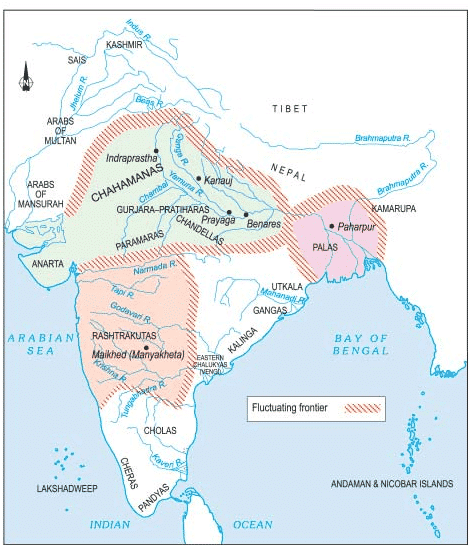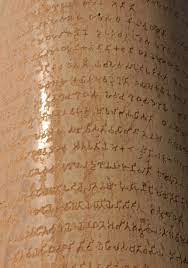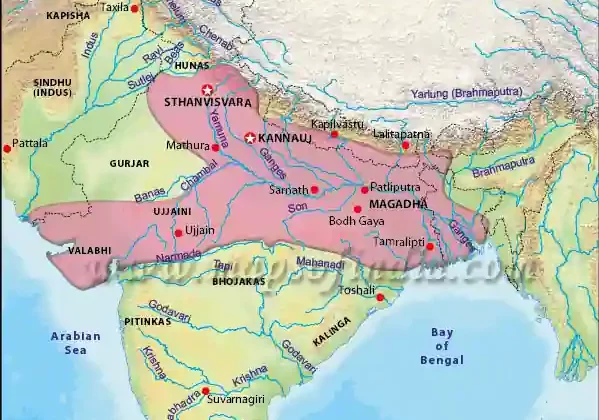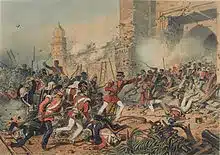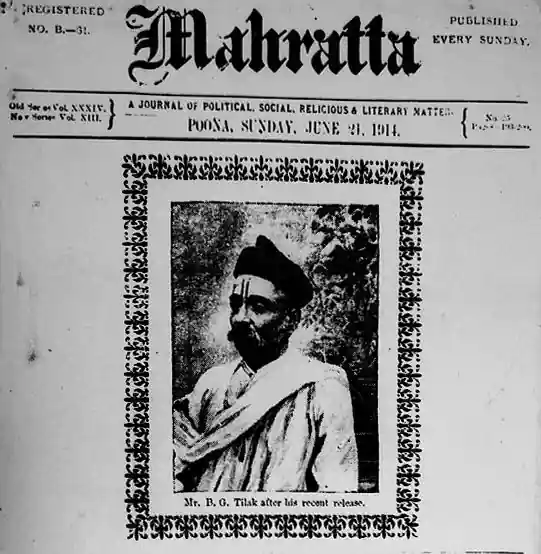Introduction of Sangam age
The Sangam age refers to that period in the early history of south India, when large numbers of poems in Tamil were composed by a number of authors. The term ‘Sangam’ refers to an assembly or ‘meeting together’ of Tamil poets. Traditionally, three Sangams or assemblies are believed to have been convened one after the other at different places under the patronage of the Pandya kings of Madurai.
- The period roughly between the 3rd century B.C. and 3rd century A.D. in South India (the area lying to the south of river Krishna and Tungabhadra) is known as Sangam Period.
- It has been named after the Sangam academies held during that period that flourished under the royal patronage of the Pandya kings of Madurai.
- At the sangams eminent scholars assembled and functioned as the board of censors and the choicest literature was rendered in the nature of anthologies.
- These literary works were among the first examples of Dravidian literature.
- According to the Tamil legends, there were three Sangams (Academy of Tamil poets) held in the ancient South India popularly called Muchchangam.
- The First Sangam, is believed to be held at Madurai, attended by gods and legendary sages. No literary work of this Sangam is available.
- The Second Sangam was held at Kapadapuram, only Tolkappiyam survives from this.
- The Third Sangam was also held at Madurai. A few of these Tamil literary works have survived and are a useful sources to reconstruct the history of the Sangam period.
- The 1st Sangam was presided over by Agasthya. However, the present Sangam literature belongs to the 2nd and 3rd Sangams. The dynasties which used to participate were Cheras, Cholas and Pandyas.
| Sangam | Place | Chairman | Outcome |
| First | Thenmadurai | Agastya | Its works did not survive. |
| Second | Kapatapuram | Tolkappiyar | Only the Tolkappiyam (a Tamil grammar) by Tolkappiyar survives |
| Third | Madurai | Nakkirar | Forms the entire corpus of existing Sangam Literature |
Sangam age – Sources
The literary sources of that period are an important source of information to construct the history of that time. Important literary works are as follows:
- Tolkappiyam written by Tolkappiyar. It is the earliest text and deals with grammar.
- Madweaikkangi written by Malgudi Marudan. It describes the city of Kaveripatnam and is the most important source on the trade and commerce in the deep South.
- Murugarupadai is a song addressed to Murugan (Son of Shiva), the most powerful God of South, written by Nakkirar.
- Palamoli – It deals with day to day rituals of Tamilians written by Mururai Ariyar.
- Thirukkural is written by the great saint Thiruvalluvar and is full of proverbs. Its theme is ethics and morals values of the said period. It is also called Bible of Sangam literature.
Other Sources of Sangam Age
- Aside from the Sangam literature, Greek authors such as Megasthenes, Strabo, Pliny, and Ptolemy indicate economic links between the West and South India.
- The Chera, Chola, and Pandya monarchs of the Mauryan empire are mentioned in the Asokan inscriptions.
- The Hathikumbha inscription of Kharavela of Kalinga mentions Tamil kingdoms as well.
- The excavations at Arikamedu, Poompuhar, Kodumanal, and other locations demonstrate the Tamils’ abroad trading operations.
Sangam Literature – Classification: Sangam Age
- Sangam literature is divided into two categories: akam and puram.
- Akam poetry is concerned with emotions and sentiments in the context of romantic love, sexual connection, and sensuality.
- Puram poetry is concerned with exploits and heroic achievements in the setting of battle and public life.
- Three-fourths of the Sangam poetry is akam-themed, while one-fourth is puram-themed.
- Sangam literature, including akam and puram, is divided into seven minor genres known as tinai.
- This minor genre is centred on the setting or scenery of the poetry.
- Kurinci refers to mountainous regions; mullai refers to pastoral woods; marutam refers to riverine agricultural land; neytal coastal regions; and palai refers to arid regions.
- In addition to landscape-based tinais, ain-tinai (well-matched, mutual love), kaikilai (ill-matched, one-sided), and perunthinai (unsuited, big genre) categories are employed for akam poetry.
- The Ainkurunuru — a collection of 500 short poems – is an example of reciprocal love poetry.
- Similar tinais apply to puram poetry as well; categories include vetchi (cattle raid), vanchi (invasion, preparation for war), kanchi (tragedy), ulinai (siege), tumpai (battle), vakai (victory), paataan (elegy and acclaim), karanthai, and pothuval.
- The akam poetry employs metaphors and images to build the atmosphere; it never contains names of people or places, and it frequently leaves out context, which the community would fill in and comprehend given their oral history.
- Puram poetry is more direct and utilises names and locations.
Sangam Literature is divided into 5 sections called:
- Early Works
- Eight Anthologies (called Ettutogai)
- Ten Short poems (called Pattu Pathu)
- Eighteen minor works (Paddunekki Kanakkalu)
- Three Epics
Sangam Literature – Major Works: Sangam Age
- The period of Sangam literature is still debated because the three major epics of the time, Silappathigaram, Dipavamsa, and Mahavamsa, show that Gajabhagu II of Sri Lanka and Cheran Senguttuvan of the Chera dynasty were contemporaries.
- Also, coins struck by the Roman Emperor in the first century may be found in considerable quantities in various parts of Tamil Nadu.
- Furthermore, Greek authors such as Megasthenes, Strabo, and Pliny claimed trading links between the West and South India.
- Inscriptions from the Ashokan Empire described the Cheras, Chola, and Pandya monarchs to the south of the Mauryan Empire.
- On the basis of literary, archaeological, and foreign evidence, the dating of the Sangam literature has been placed between the third century B.C. and the third century A.D.
- Tolkappiyam, Ettutogai, Pattuppattu, Pathinenkilkanakku, and the two epics Silappathikaram and Manimegalai comprise the Sangam literature.
- Elango Adigal’s Silappathigaram and Sittalai Sattanar’s Manimegalai were both published during the postmodern era.
- These works include important information on the Sangam political system and society.
- The Kalugumalai inscription provides information about Tamil Brahmi writing, which dates back to the 15th century.
- The Tirukkovalur inscription mentions local chieftains as well as the terrible fate of Tamil poets.
- The Tolkappiyam, written by Tolkappiyar, was the first of these works, and it contains information about the social, economic, and political situations of the Sangam Age, as well as Tamil grammar.
- Ettutogai were the eight Anthologies, each of which had eight pieces.
- Ettutogai and Pattuppattu were both separated into two major groups: Aham (love) and Puram (valour).
Silappathikaram: Sangam Age
- The earliest Tamil epic is Silappatikaram.
- Silappatikaram was written by Ilango Adigal, the grandson of Karikhala Chola.
- He is said to be a Jain monk and the younger brother of Chera king Senguttuvan, whose family and rule are detailed in the Fifth Ten of the Patiuppattu, a Sangam poetry.
- The hero of the epic, Kovelan was a merchant of Kaveripatnam. The heroine of the epic, Kannagi, was the wife of Kovelan: She became Goddess of Chastity and inspired a cult called Pattini cult (Worship of Kannagi).
- Kannaki and her husband Kovalan are the protagonists of the epic, which tells the sad love tale of an average couple.
Manimegalai: Sangam Age
- It was written by Settasaisattanar.
- It is the story of Manimekhala, the daughter of Kovelan and Madhavi, a beauty who excelled in fine arts.
- Udaikumar was the villain of the epic.
- Manimekhala becomes a Buddhist nun.
- It was the first text to talk about the development of fine arts and Buddhism in the deep South.
Saivaga Chintamani:
- It was written by Tiruttakadevatar and is a story of a magnificent character called Saivaga who finally became a Jain monk.
- The epic also talks about the popularity of Jainism in the deep South.
Tolkappiyam: Sangam Age
- The oldest existing Tamil grammar text and the oldest extant lengthy work of Tamil literature is Tolkappiyam.
- Some believe Tholkapiyam was authored by a single author named Tholkappiyar, a disciple of Vedic sage Agastya, who is attested in the Rigveda.
- The Tolkappiyam consists of three volumes (athikaram), each having nine chapters (iyal), for a total of 1,610 sutras in the nurpa metre in the extant manuscripts.
- Sutras on spelling, phonology, etymology, morphology, semantics, prosody, sentence structure, and the importance of context in language are included in this comprehensive grammar work.
- It’s impossible to put a date on the Tolkappiyam.
- Some Tamil scholars situate the passage in the mythological second sangam, which date to the first millennium BCE or earlier.
Ettuthogai: Sangam Age
- The Eight Anthologies, also known as Ettuttokai or “Eight Collections,” is a great Tamil literary work that is part of the Sangam Literature’s Eighteen Greater Texts (Patinen-melkanakku) anthology series.
- The Eight Anthologies (Pattuppattu) and its companion anthology, the Ten Idylls (Pattuppattu), are the earliest Tamil works extant.
- Aingurunooru, Narrinai, Aganaooru, Purananooru, Kuruntogai, Kalittogai, Paripadal, and Padirruppatu are the eight works that make up Ettuthogai (Eight Anthologies).
Pattuppattu: Sangam Age
- The 10 Idylls, also known as Pattupattu or Ten Lays, is a collection of ten lengthier poetry from Tamil literature’s Sangam period.
- They include between 100 and 800 lines, and the collection contains the well-known Tirumurukarruppaai by Nakkirar.
- The Pattupattu collection is a later-dated collection, with the first layer dating from the 2nd to 3rd century CE, the middle layer from the 2nd to 4th century CE, and the last layer from the 3rd to 5th century CE.
- Thirumurugarruppadai, Porunarruppadai, Sirupanarruppadai, Perumpanarruppadai, Mullaippattu, Nedunalvadai, Madurai Kanji, Kurinjippatttu, Pattinappalai, and Malaipadukadam are the 10 works that make up the Pattupattu (Ten Idylls).
Pathinenkilkanakku: Sangam Age
- The Pathinenkilkanakku, also known as the Eighteen Lesser Texts in literature, is a collection of eighteen poetry compositions, most of which were written during the ‘after Sangam period’ (between 100 and 500 CE).
- Eighteen texts on ethics and morality are included in Pathinenkilkanakku.
- Tirukkural, written by Thiruvalluvar, a renowned Tamil poet and philosopher, is the most important of these texts.
- The poems in this collection differ from those in the Eighteen Greater Texts, which are the oldest known Tamil poetry, in that they are written in venpa metre and are very brief.
- The single anthology in this collection is Naladiyar, which has been sung by 400 poets.
Significance of Sangam Literature: Sangam Age
- The Sangam literature provides historical evidence of indigenous literary growth in South India parallel to Sanskrit, as well as the Tamil language’s classical rank.
- While little evidence exists for the first and second mythological Sangams, the surviving literature attests to a group of intellectuals based on ancient Madurai (Maturai) who affected the “literary, academic, cultural, and linguistic life of ancient Tamil Nadu.”
- The Sangam literature provides insight into various aspects of ancient Tamil society, secular and religious ideas, and individuals.
- The Sangam literature contains evidence of Sanskrit loan words, implying ongoing linguistic and literary collaboration between ancient Tamil Nadu and other areas of the Indian subcontinent.
- Sangam poetry is concerned with culture and people. Except for the odd reference of Hindu gods and more major allusions of numerous gods in the shorter poems, it is virtually exclusively non-religious.
Polity of Sangam Age
- During the Sangam Age, South India was dominated by three dynasties: the Cheras, Cholas, and Pandyas.
- The Sangam Period literary allusions are the primary source of knowledge about these countries.
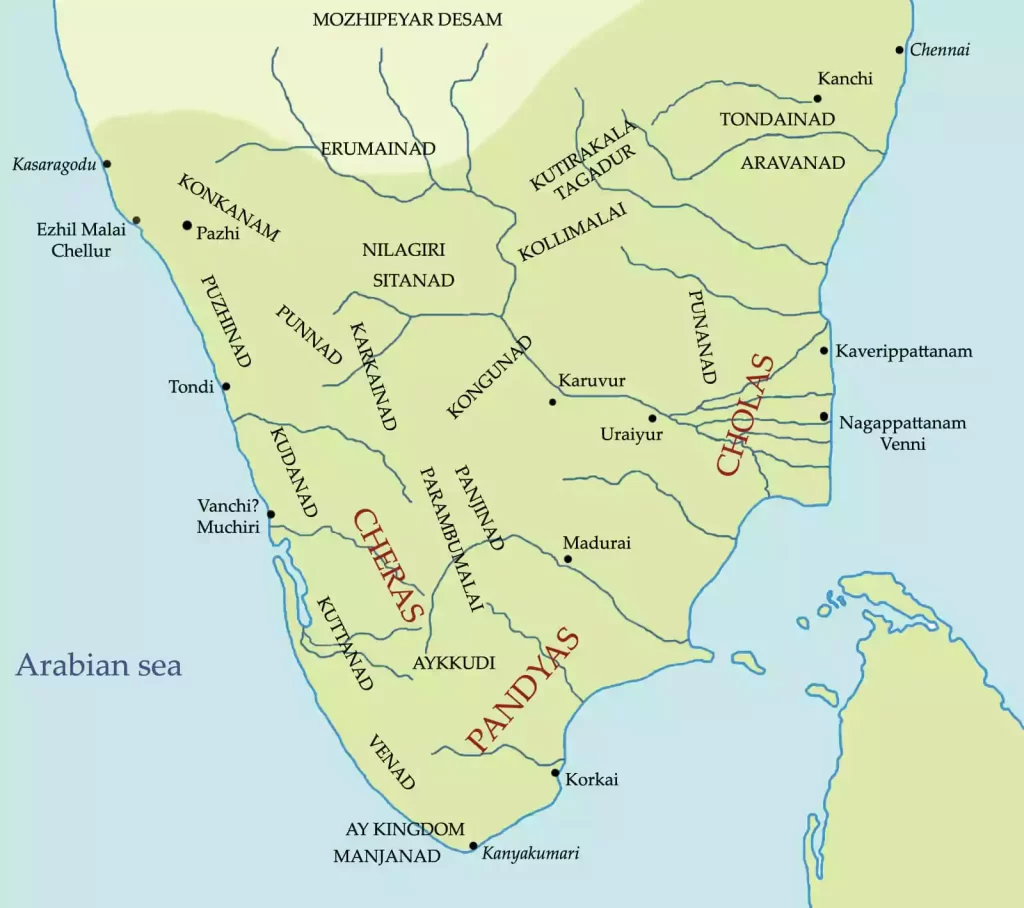
Cheras
- The Cheras ruled over Kerala’s centre and northern regions, as well as the Kongu area of Tamil Nadu.
- Their capital was Vanji, and they controlled the ports on the west coast, Musiri and Tondi.
- Cheras’s insignia was a “bow and arrow.”
- The Pugalur inscription from the first century AD mentions three generations of Chera monarchs.
- The Cheras’ significance stemmed from trading with the Romans. They also erected an Augustus temple nearby.
- Senguttuvan, often known as the Red Chera or the Good Chera, was the greatest monarch of Cheras in the second century A.D.
- His military exploits are detailed in the epic Silapathikaram, including his trip to the Himalayas, where he destroyed numerous north Indian kingdoms.
- Senguttuvan popularised the Pattini cult, or worship of Kannagi as the ideal bride, in Tamil Nadu.
- He was the first to send an embassy from South India to China.
Cholas
- During the Sangam era, the Chola monarchy stretched from the contemporary Tiruchi district to southern Andhra Pradesh.
- Their capital was first located in Uraiyur but was later relocated to Puhar. Karikala was a well-known Sangam Chola ruler.
- Pattinappalai depicts his childhood and military triumphs.
- He vanquished the powerful confederacy of the Cheras, Pandyas, and eleven smaller chieftains at the Battle of Venni.
- Many Sangam poetry reference this occurrence.
- Another significant fight fought by him was Vahaipparandalai, in which nine enemy chieftains surrendered before him.
- Karikala’s military accomplishments elevated him to the position of ruler of the whole Tamil kingdom.
- During his rule, trade and commerce prospered.
- He was in charge of reclaiming forest lands and bringing them back into agriculture, bringing wealth to the people.
- He also erected Kallanai across the Kaveri River and several irrigation canals.
Pandyas
- The Pandyas reigned over what is now southern Tamil Nadu.
- Madurai was their capital. The first Pandyan rulers were Nediyon, Palyagasalai Mudukudumi Peruvaludhi, and Mudathirumaran.
- There were two Neduncheliyans present. The first was known as Arya Padai Kadantha Neduncheliyan (one who defeated Aryan armies).
- He was responsible for Kovalan’s execution, for which Kannagi burnt Madurai.
- Talaiyalanganattu Cheruvenra (He who won the war of Talaiyalanganam) Neduncheliyan was the other. Nakkirar and Mangudi Maruthanar both commended him.
- He received this title after defeating his opponents in the Battle of Talaiyalanganam, which took place in the Tanjore district.
- With this win, Neduncheliyan won control of the whole state of Tamil Nadu.
- Mangudi Maruthanar’s Madurai Kanji portrays the socioeconomic status of the Pandya nation, particularly the booming harbour of Korkai.
- Uggira Peruvaludhi was the last renowned Pandyan ruler. The invasion of the Kalabhras caused the Pandyan power to wane during the Sangam Age.
Sangam age – Minor Rulers
- Minor chieftains were important throughout the Sangam era. Pari, Kari, Ori, Nalli, Pegan, Ay, and Adiyaman were well-known for their charity and support of Tamil poets.
- As a result, they were dubbed Kadai Elu Vallalgal.
- They were strong and popular in their own domains, while being subordinate to the Chera, Chola, and Pandya emperors.
Administration of Sangam Age
- During the Sangam period hereditary monarchy was the form of government.
- Each of the dynasties of Sangam age had a royal emblem – tiger for the Cholas, carp/Fish for the Pandyas, and bow for the Cheras.
- The king was assisted by a wide body of officials who were categorised into five councils.
- They were ministers (amaichar), priests (anthanar), envoys (thuthar), military commanders (senapathi), and spies (orrar).
- The military administration was efficiently organized and a regular army was associated with each ruler.
- The chief source of state’s income was land revenue while a custom duty was also imposed on foreign trade.
- Major source of fulfilling the royal treasury was the booty captured in wars.
- The roads and highways were maintained and guarded to prevent robbery and smuggling.
Society of Sangam Age
- Tolkappiyam refers to the Five-fold division of lands – Kurinji (hilly tracks), Mullai (pastoral), Marudam (agricultural), Neydal (coastal) and Palai (desert).
- The individuals who lived in these five divisions had their own primary jobs as well as gods to worship.
- Kurinji – chief deity Murugan – chief occupation hunting and honey collection.
- Mullai – chief deity Mayon (Vishnu) – chief occupation cattle-rearing and dealing with dairy products.
- Marudam – chief deity Indira – chief occupation agriculture.
- Neydal – chief deity Varunan – chief occupation fishing and salt manufacturing.
- Palai – the supreme god Korravai is the major occupation of robbery.
- Tolkappiyam is also used to refer to four castes: arasar, anthanar, vanigar, and vellalar. The governing class was known as arasar.
- Anthanars were influential in Sangam politics and religion. Vanigars were traders and merchants.
- The vellalas worked in agriculture. Other tribal tribes identified in the Sangam civilization included the Parathavar, Panar, Eyinar, Kadambar, Maravar, and Pulaiyar.
- During this time, primitive tribes such as the Thodas, Irulas, Nagas, and Vedars existed.
Religion of Sangam Age
- The primary deity of the Sangam period was Murugan, who is hailed as Tamil God.
- The worship of Murugan was having an ancient origin and the festivals relating to God Murugan was mentioned in the Sangam literature.
- Murugan was honoured with six abodes known as Arupadai Veedu.
- Other gods worshipped during the Sangam period were Mayon (Vishnu), Vendan (Indiran), Varunan and Korravai.
- The Hero Stone or Nadu Kal worship was significant in the Sangam period and was erected in memory of the bravery shown by the warriors in the battle.
Position of Women during Sangam Age
- A lot of information is available in the Sangam literature to understand the position of women during the Sangam age.
- Women had respect and were allowed intellectual pursuits.
- There were women poets like Avvaiyar, Nachchellaiyar, and Kakkaipadiniyar who flourished and contributed to Tamil literature.
- Women’s bravery was also lauded in several poems.
- Karpu, or chaste life, was seen to be the finest virtue of women. It was common practice to marry for love. Women were given the right to pick their life mates.
- Widows, on the other hand, had a wretched life. Sati was also widely practised in society’s upper echelons.
- The monarchs and nobility patronised the class of dancers.
Art of Sangam Age
- Poetry, music, and dance were prominent among the Sangam people. The monarchs, chieftains, and nobility made generous payments to poets.
- Panar and Viraliyar, two singing bards, packed the royal courts. They were masters of traditional tunes and dances.
- Music and dance were highly developed arts.
- The Sangam literature mentions a variety of Yazhs and drums. Kanigaiyar did a dance. People’s favourite form of entertainment was koothu.
Economy during Sangam Age
- Agriculture was the chief occupation where rice was the most common crop.
- The handicraft included weaving, metal works and carpentry, ship building and making of ornaments using beads, stones and ivory.
- These were in great demand in the internal and external trade that was at its peak during the Sangam period.
- A high expertise was attained in spinning and weaving of cotton and silk clothes. These were in great demand in the western world especially for the cotton clothes woven at Uraiyur.
- The port city of Puhar became an important place of foreign trade, as big ships entered this port containing precious goods.
- Other significant ports of commercial activity were Tondi, Musiri, Korkai, Arikkamedu and Marakkanam.
- Many gold and silver coins that were issued by the Roman Emperors like Augustus, Tiberius and Nero have been found in all parts of Tamil Nadu indicating flourishing trade.
- Major exports of the Sangam age were cotton fabrics and spices like pepper, ginger, cardamom, cinnamon and turmeric along with ivory products, pearls and precious stones.
- Major imports for the traders were horses, gold, and sweet wine.
End of Sangam Age
- The Sangam period gradually declined at the end of the third century A.D.
- For almost two and a half centuries, the Kalabhras occupied Tamil land. There is very little knowledge about the Kalabhra reign.
- The Kalabhras occupied the Tamil country post-sangam period between 300 AD to 600 AD, whose period was called an interregnum or ‘dark age’ by earlier historians.
- During this time, Jainism and Buddhism rose to prominence.
- The Pallavas of northern Tamil Nadu and the Pandyas of southern Tamil Nadu pushed the Kalabhras out of Tamil Nadu and established their reign.
Conclusion
The Sangam Age is an important epoch in South Indian history. The Sangam period or age, more especially the third Sangam period, was a historical period in ancient Tamil Nadu, Kerala, and parts of Sri Lanka that lasted from roughly the 6th century BCE to around the 3rd century CE. It was named after the well-known Madurai-based Sangam schools of poets and thinkers.


